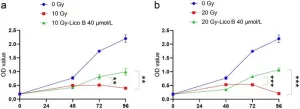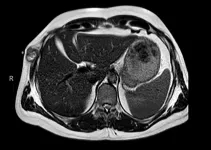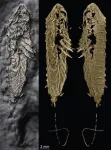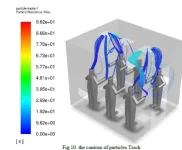(Press-News.org) WASHINGTON, DC – OCTOBER 28, 2024 – The first powered randomized trial examining early intervention with transcatheter aortic valve replacement (TAVR) in patients with asymptomatic, severe aortic stenosis (AS) found this strategy to be both a safe and effective alternative to clinical surveillance (CS).
Findings were reported today at TCT 2024, the annual scientific symposium of the Cardiovascular Research Foundation (CRF). TCT is the world’s premier educational meeting specializing in interventional cardiovascular medicine. Results were also published simultaneously in the New England Journal of Medicine.
For patients with asymptomatic, severe AS and preserved left-ventricular ejection fraction, current guidelines recommend clinical surveillance every six to 12 months. Whether the strategy of early TAVR confers benefits over guideline-indicated clinical surveillance remains to be determined.
From March 2017 through December 2021, 1,578 patients consented for screening at 75 centers in the United States and Canada. A total of 901 patients were randomized to either transfemoral TAVR (n=455) or clinical surveillance (n=446). The mean age was 76 years, 69% were male, the mean Society of Thoracic Surgeons risk score was 1.8%, and 84% of patients were considered low surgical risk per local heart team evaluation. Asymptomatic status was confirmed in more than 90% of patients with a negative treadmill stress test. In addition, the mean Kansas City Cardiomyopathy Questionnaire score at baseline was 92.7 (excellent status). Baseline echo characteristics were also similar between both groups.
The primary endpoint, the composite of death, stroke, or unplanned cardiovascular hospitalization, was evaluated for superiority in the intent-to-treat population after a minimum follow-up of two years. Early TAVR resulted in a significant reduction of the primary endpoint at two years as well as a median follow-up of 3.8 years, occurring 35.1% in the TAVR group compared with 51.2% in the surveillance group [HR (95%CI): 0.50 (0.40, 0.63), p < 0.001].
The secondary endpoint of favorable health status outcome occurred more frequently in the early TAVR group (86.6%) compared with the surveillance group [68.0%, Abs ∆: 18.5% [12.6%, 24.3%], p <0.001].
Left-ventricular and left-atrial health at two years was also better for those who underwent early TAVR [48.1% versus 35.9%, Abs ∆: 12.2% (4.4%, 19.4%), p=0.001]. Change in left-ventricular ejection fraction from baseline to two years, new onset atrial fibrillation, and death or disabling stroke were similar between the two groups.
By two years, more than 70% of the patients in the clinical surveillance group had AVR, with the vast majority becoming symptomatic. The median time to conversion was 11.1 months, with 26% and 47% requiring AVR at 6 months and 1 year, respectively. More importantly, ~40% of patients from the clinical surveillance group presented with acute and advanced signs and symptoms, such as NYHA III-IV heart failure, pulmonary edema, or syncope.
“Given the benefits observed and the lack of harm, early TAVR may be preferred to clinical surveillance in patients with asymptomatic severe AS, especially when combined with the challenges of timely symptom recognition and prompt treatment in real-world settings,” said Philippe Généreux, MD, Director of the Structural Heart Program at the Gagnon Cardiovascular Institute at Morristown Medical Center. “Not only is early intervention safe and effective, but it also prevents a decline in quality of life for those who later receive TAVR and could prevent the development of cardiac damage.”
The study was funded by Edwards Lifesciences.
Dr. Genereux reported the following disclosures: Consultant Fee/Honoraria/Speaker’s Bureau from Abbott Vascular; Abiomed; Boston Scientific Corporation; CARANX Medical; Cardiovascular System Inc; Edwards Lifesciences; Egnite; Medtronic; Opsens; Shockwave; Teleflex and 4C Medical. Equity/Stock(s)/Options from Pi-cardia; Puzzle Medical and Soundbite Medical Inc.
About CRF® and TCT®
The Cardiovascular Research Foundation® (CRF®) is a global leader in interventional cardiovascular medicine, driving innovation, spearheading groundbreaking research, and transforming education in the field. Through its relentless pursuit of excellence, CRF® not only accelerates medical breakthroughs but also equips healthcare professionals with the tools and knowledge necessary to enhance survival rates and elevate the quality of life for millions worldwide. CRF’s centers of excellence include the CRF Skirball Center for Innovation, CRF Clinical Trials Center, CRF Center for Education, CRF Digital, TCTMD, and Structural Heart: The Journal of the Heart Team.
Transcatheter Cardiovascular Therapeutics® (TCT®) is the annual scientific symposium of CRF® and the world’s premier educational meeting specializing in interventional cardiovascular medicine. Anchored in a legacy spanning over three decades, TCT® is a world-class educational experience featuring disruptive innovation, scientific breakthroughs, expert-led tutorials, hands-on training, and ample opportunities for networking and collaboration.
For more information, visit www.crf.org and www.tctconference.com.
###
END
Patients with late-stage cancer often have to endure multiple rounds of different types of treatment, which can cause unwanted side effects and may not always help.
In hopes of expanding the treatment options for those patients, MIT researchers have designed tiny particles that can be implanted at a tumor site, where they deliver two types of therapy: heat and chemotherapy.
This approach could avoid the side effects that often occur when chemotherapy is given intravenously, and the synergistic effect of the two therapies ...
WASHINGTON, DC – OCTOBER 28, 2024 – The EVOLVED trial found that early aortic valve intervention in patients with asymptomatic severe aortic stenosis (AS) and mid-wall myocardial fibrosis on magnetic resonance imaging did not reduce the incidence of the composite primary endpoint of all-cause death or unplanned aortic stenosis hospitalization compared with guideline-directed conservative management.
Findings were reported today at TCT 2024, the annual scientific symposium of the Cardiovascular Research Foundation (CRF). TCT is the world’s premier educational meeting specializing in interventional cardiovascular ...
Earlier this year, researchers at the Flatiron Institute’s Center for Computational Quantum Physics (CCQ) announced that they had successfully used a classical computer and sophisticated mathematical models to thoroughly outperform a quantum computer at a task that some thought only quantum computers could solve.
Now, those researchers have determined why they were able to trounce the quantum computer at its own game. Their answer, presented on October 29 in Physical Review Letters, reveals that the quantum problem they tackled — involving ...
University of Texas at Dallas mechanical engineers have designed a 3D-printed femur that could help doctors prepare for surgeries to repair bones and develop treatments for bone tumors.
The engineers, who worked in collaboration with UT Southwestern Medical Center orthopedic surgeons, published their first study on the 3D-printed thigh bone online Aug. 5 in the Journal of Orthopaedic Research.
The study, which focused on the middle section of the bone, establishes 3D-printing parameters for a femur for use in biomechanical testing. Researchers said more studies will be needed before the technology could be available for widespread use.
To study and validate innovative surgical implants ...
A study led by researchers at the University of Colorado Anschutz Medical Campus reveals patients and providers have more positive overall care experiences when the entire healthcare team is a part of bedside interdisciplinary rounds (BIDR).
The study published today in the Journal of General Internal Medicine.
The study found that BIDR, when the team meets at a patients’ bedside in the hospital to discuss care plans, helps build trust between patients and their healthcare providers and within healthcare teams by allowing everyone to observe and work together more closely.
“Traditional ...
Background and objectives
Radiation injury poses a serious threat to human health, causing complex and multifaceted damage to cells and tissues. Such injury can be caused by various factors, including nuclear accidents, medical radiation therapy, and space travel. Currently, finding effective treatment methods and drugs to mitigate the harmful effects of radiation injury on the human body is a crucial research direction. This study aimed to explore the protective effects and mechanisms of Licochalcone ...
“This case report highlights the importance of full tumor genotyping to identify potentially actionable targets in rare tumors such as malignant glomus tumors.”
BUFFALO, NY- October 29, 2024 – A new case report was published in Oncotarget's Volume 15 on October 11, 2024, entitled “Complete response to encorafenib plus binimetinib in a BRAF V600E-mutant metastasic malignant glomus tumor.”
As highlighted in the abstract, glomus tumors (GT) are rare mesenchymal neoplasms originating in dermal arteriovenous structures involved in thermoregulation. ...
UNDER EMBARGO UNTIL 15:00 GMT / 11:00 ET TUESDAY 29 OCTOBER 2024
Gold bugs: spectacular new fossil arthropod preserved in fool’s gold
Images available via link in the notes section
A new 450-million-year-old fossil arthropod, preserved in 3D by iron pyrite (fool’s gold), has been unveiled by scientists.
The new species, Lomankus edgecombei, is distantly related to spiders, scorpions, and horseshoe crabs.
The findings have been published today (29 Oct) in the journal Current Biology.
A team of researchers led by Associate Professor Luke Parry, Department of Earth Sciences, University of Oxford, have unveiled a spectacular ...
WASHINGTON, Oct. 29, 2024 – While many smoking rooms in U.S. airports have closed in recent years, they are still common in other airports around the world. These lounges can be ventilated, but how much does it actually help the dispersion of smoke?
Research published in Physics of Fluids, by AIP Publishing, shows that not all standing positions in airport smoking lounges are created equal.
Researchers from the University of Hormozgan in Iran studied nicotine particles in a simulated airport smoking room and found that the thermal environment and positioning of smokers influenced how particles ...
AURORA, Colo. (Oct. 29, 2024) – An ancient gene mutation among First Nations inhabitants of Oceania may make them more susceptible to infectious diseases like influenza, according to a new study by scientists at the University of Colorado Anschutz Medical Campus.
“We found quite a diverse set of genes in this population but there was one allele that really stood out in terms of genetic composition,” said the study’s lead author Paul Norman, PhD, professor of biomedical informatics at the University of Colorado School of Medicine. “We did some investigating, and we suspect this allele ...






